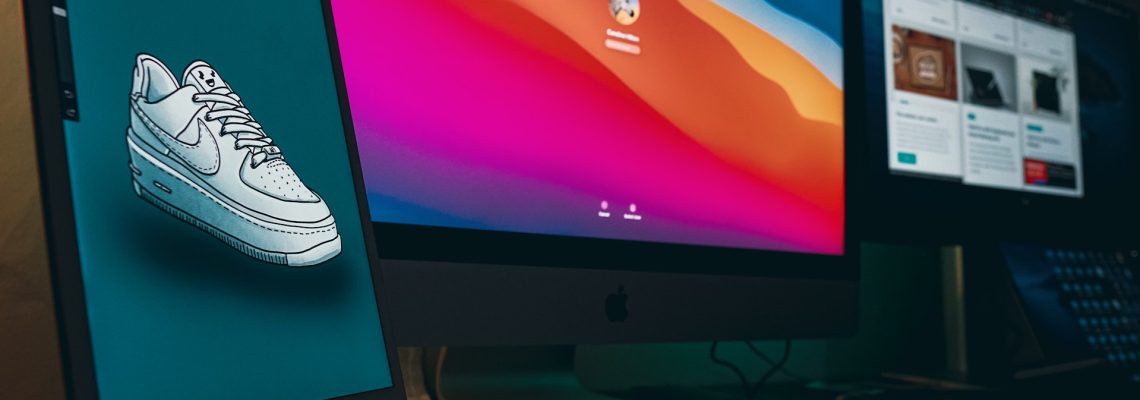Welcome to the world of graphic design, where creativity meets commerce! If you have a passion for design and a knack for marketing, starting a graphic design business can be a fulfilling and profitable venture.
As a graphic designer, you have the power to bring ideas to life and make an impact on businesses and individuals alike. Whether you specialize in branding, web design, print design, or a combination of these, your skills are in high demand in today’s market.
Starting a graphic design business is not just about creating beautiful designs, it’s also about knowing how to sell them. You need to understand your target audience, their needs, and how your designs can solve their problems. This requires a solid sales and marketing strategy that will help you promote your services and build your brand.
At your graphic design business, you’ll have the opportunity to work with clients from various industries, ranging from startups to established corporations. By creating effective designs that communicate their message and meet their goals, you’ll be able to establish long-term relationships and generate referrals.
So if you’re ready to turn your passion for design into a successful business, let’s get started! With the right combination of skills, strategy, and creativity, the sky’s the limit for your graphic design business.
Main reasons to start a graphic design business
Creative fulfillment
As a graphic designer, you have the opportunity to bring your ideas to life and make a tangible impact on the world through your designs.
Independence and flexibility
Starting your own business means you get to be your own boss, set your own schedule, and work on projects that interest you.
High demand
In today’s digital age, businesses of all sizes need graphic design services to help them stand out and communicate their message effectively.
Potential for high earnings
With the right marketing strategy and a solid portfolio, you can earn a lucrative income as a graphic designer.
Variety of work
As a graphic designer, you can work on a variety of projects, ranging from branding and logo design to web design, print materials, and more.
Opportunity for growth
As you build your business and establish a solid reputation, you may have the opportunity to expand your services, hire employees, and take on larger and more complex projects.
Entrepreneurial satisfaction
Running a successful graphic design business can be a highly satisfying and rewarding experience, as you see your hard work and creativity pay off in the form of happy clients and financial success.
How to start a graphic design business
If you’re considering starting a graphic design business in Australia, you may be wondering how to get started? Here are some of the main reasons to consider to get your business up and running.
Develop your skills
Formal education
Consider pursuing a degree or certificate program in graphic design, either at a college or university or through a specialized design school. These programs provide a comprehensive education in the principles of design, typography, color theory, and other technical and creative skills.
Online courses
There are a wealth of online courses available that cover a wide range of graphic design topics, from basic design principles to advanced techniques in software like Adobe Photoshop, Illustrator, and InDesign. Many of these courses are self-paced and can be completed on your own schedule.
Self-directed learning
You can also develop your graphic design skills through self-directed learning, by practicing your design skills on personal projects or by working with clients. Seek out feedback from other designers or industry professionals to improve your skills and stay up-to-date on the latest trends and techniques.
Attend workshops and conferences
Attend graphic design workshops, conferences, and other events to learn from industry experts and connect with other designers. This can be a great way to stay inspired and motivated, as well as to learn new skills and techniques.
By developing your graphic design skills through education, practice, and self-directed learning, you will be well-equipped to create high-quality designs for your clients and build a successful graphic design business.
Define your niche
Identify your strengths
Start by identifying the areas of graphic design that you excel in and enjoy the most. Consider the types of projects you’ve enjoyed working on in the past, as well as any specialized skills or expertise you have.
Research the market
Research the demand for different types of graphic design services in your area or target market. Look for areas where there is high demand but low competition, or where you can offer a unique value proposition.
Consider your target audience
Think about the specific audience you want to serve with your graphic design services. For example, if you want to work with small businesses, you may want to focus on branding and web design, while if you want to work with larger corporations, you may want to specialize in packaging design or advertising.
Differentiate yourself
Once you’ve identified your niche, think about how you can differentiate yourself from other designers in that area. Consider your unique selling proposition, your style, and your approach to design.
Test your niche
Before fully committing to a specific niche, consider testing the waters by taking on a few projects in that area. This will help you determine if there is enough demand and whether you enjoy working in that area.
By defining your niche in graphic design, you can differentiate yourself from other designers, target your marketing efforts more effectively, and build a reputation as an expert in a specific area of design. This can help you attract more clients and build a successful business.
Create a business plan
Executive summary
This should be a brief overview of your business, including your mission statement, target market, and services.
Market analysis
This section should provide an overview of the graphic design industry, including trends, competition, and target audience.
Services
Detail the specific services you will offer, such as branding, web design, or print design, and explain how these services will meet the needs of your target market.
Pricing
Explain how you will price your services, including your hourly rate or project-based pricing, and how this pricing aligns with industry standards and your target market.
Marketing strategy
Detail your marketing plan, including how you will promote your services, target specific audiences, and build relationships with clients.
Operations
Explain how you will run your business on a day-to-day basis, including any employees or contractors you may hire, software or equipment you’ll need, and how you’ll manage finances and administrative tasks.
Financial projections
This section should include financial projections for your business, including revenue and expenses, profit and loss statements, and cash flow projections.
Developing a business plan can help you stay focused and organized as you launch your graphic design business. It can also help you secure financing, attract clients, and stay on track as you work towards your business goals.
Register your business
Choose a business structure
Decide on the legal structure for your business, such as sole proprietorship, partnership, Pty Ltd, or corporation. Each structure has different requirements and tax implications, so it’s important to research and choose the one that’s best for your business.
Choose a business name
Choose a unique business name that reflects your brand and is easy to remember. Check to make sure the name is available by doing a business name search through your state’s Secretary of State website.
Register your business
Register your business with your state or local government agencies. Depending on your location and business structure, you may need to register with your Secretary of State, Department of Revenue, or local business licensing agency.
Obtain any necessary licenses and permits
Depending on your location and the nature of your business, you may need to obtain specific licenses or permits. For example, if you plan to work from a home office, you may need to obtain a home-based business permit.
Obtain an ABN number
You will need to obtain an Australian Business Number (ABN) from ASIC if you plan to hire employees or if you structure your business as a partnership or corporation.
Registering your graphic design business with the appropriate government agencies and obtaining any necessary licenses and permits is important for ensuring that your business is legally compliant and able to operate without interruption. It can also help you build trust with potential clients and establish your business as a professional, legitimate entity.
Set up your workspace
Determine your workspace needs
Consider your work style and the type of projects you’ll be working on. Do you need a large desk or multiple screens? Will you need a separate room for meetings or a quiet space for concentrated work?
Choose a location
Decide where you want to set up your workspace. Depending on your preferences and budget, this could be a home office, a co-working space, or a separate studio space.
Set up your workspace
Once you’ve chosen a location, set up your workspace to maximize productivity and creativity. This may include purchasing a comfortable chair, a desk or table, and any necessary equipment such as a computer, printer, or scanner. Consider adding plants or artwork to create a visually appealing and inspiring environment.
Consider your lighting and ergonomics
Lighting is important for both productivity and creativity. Make sure your workspace has adequate lighting, and consider adding natural light through windows or skylights. Additionally, make sure your workspace is ergonomically sound, with proper seating and desk height to prevent back or neck pain.
Ensure you have the necessary tools and software
As a graphic designer, you’ll need access to specialized software such as Adobe Creative Suite or Canva. Make sure you have access to the tools and software you need to complete your work efficiently and effectively.
Setting up a dedicated workspace for your graphic design business can help you establish a productive and inspiring environment that supports your creative work. By choosing the right location, equipment, and tools, you can create a workspace that helps you produce high-quality designs and grow your business.
Invest in equipment and software
Choose a computer
Your computer is one of the most important tools you’ll use as a graphic designer. Choose a computer with enough processing power, memory, and storage to handle your design software and projects. A desktop computer with a large monitor may be more comfortable for extended work sessions, while a laptop offers greater flexibility for working on-the-go.
Select design software
You’ll need specialized design software to create your designs. Adobe Creative Suite, including Photoshop, Illustrator, and InDesign, is the industry standard, but there are other options available, such as Affinity Designer or CorelDRAW. Research different software options to find the one that best fits your needs and budget.
Invest in a printer
While much of your work may be digital, you may still need to print out designs for clients or to showcase your portfolio. Invest in a high-quality printer that can produce high-quality prints.
Consider additional equipment: Depending on your niche, you may need additional equipment such as a camera, scanner, or tablet. Research the tools that are commonly used in your field to ensure you have everything you need to produce top-quality designs.
Budget accordingly
Purchasing the necessary equipment and software can be expensive, so it’s important to budget accordingly. Research prices and consider purchasing refurbished equipment to save money.
Investing in the necessary equipment and software is essential for establishing a professional graphic design business. By choosing the right tools for your work and budgeting accordingly, you can set yourself up for success and create high-quality designs that impress clients and help grow your business.
Build a portfolio
Collect your best work
Gather samples of your best design work, including both personal projects and work you’ve done for clients. Choose projects that showcase your skills and highlight your unique style.
Organize your portfolio
Once you’ve collected your work, organize it into a portfolio that is easy to navigate and visually appealing. You can create a physical portfolio or a digital portfolio, such as a website or online portfolio platform.
Showcase your range
Showcasing a range of skills and projects can help demonstrate your versatility as a designer. Include samples of different types of work, such as branding, web design, or print design, to show that you can handle a variety of projects.
Highlight your process
Consider including sketches, mockups, or design briefs to show potential clients your design process and how you approach projects.
Keep it updated
Your portfolio should be a living document that evolves as you grow as a designer. Keep it updated with your latest work and remove any outdated or irrelevant pieces.
Building a portfolio is an important step in establishing your graphic design business. A strong portfolio can help you attract potential clients and showcase your skills and unique style. By collecting your best work, organizing it into a visually appealing portfolio, and highlighting your process, you can create a portfolio that sets you apart and helps you grow your business.
Network and market your business
Attend networking events: Attend local networking events to meet other professionals in your industry and potential clients. Bring business cards and be prepared to talk about your services and what sets you apart from other designers.
Join online groups
Join online groups and forums related to graphic design and your specific niche. Participate in discussions, share your work, and connect with other designers and potential clients.
Create a website and social media profiles
Your website and social media profiles are essential tools for promoting your business and building your brand. Create a professional website that showcases your work and services, and set up social media profiles on platforms like Facebook, Instagram, and LinkedIn to reach a wider audience.
Offer discounts or special promotions
Consider offering discounts or special promotions to attract new clients and encourage repeat business. This can include discounts for first-time clients or special pricing for bulk projects.
Build relationships with clients
Building strong relationships with clients is essential for growing your business. Take the time to understand their needs and preferences, and communicate clearly throughout the design process to ensure you deliver designs that exceed their expectations.
Networking and marketing are key components of growing your graphic design business. By attending networking events, joining online groups, creating a strong online presence, offering promotions, and building strong relationships with clients, you can attract new business and establish yourself as a top designer in your niche.
Establish pricing and payment policies
Research industry standards
Research industry standards for graphic design pricing and payment policies to ensure you are pricing your services competitively and fairly.
Determine your pricing structure
Determine your pricing structure based on factors such as your level of experience, the complexity of the project, and the amount of time and resources required. You can charge a flat fee for a project or an hourly rate.
Create a detailed proposal
Once you have determined your pricing structure, create a detailed proposal for each project that outlines the scope of the project, the timeline, and the total cost.
Establish payment policies
Establish payment policies that work for you and your clients. You may require a deposit upfront or payment in installments throughout the project. Determine what forms of payment you will accept, such as checks, credit cards, or online payment platforms.
Set clear expectations
Set clear expectations with clients regarding payment deadlines and late fees. Include this information in your contract or proposal to avoid any misunderstandings or disputes.
Establishing pricing and payment policies is an important step in running a successful graphic design business. By researching industry standards, determining your pricing structure, creating detailed proposals, establishing payment policies, and setting clear expectations with clients, you can ensure that you are pricing your services fairly and getting paid on time.
Provide excellent customer service
Communicate clearly and promptly
Communication is key to building strong relationships with clients. Be sure to respond to emails, calls, and messages promptly and clearly to ensure that clients feel heard and understood.
Set realistic deadlines
Set realistic deadlines for each project and communicate them clearly with clients. Be sure to build in extra time for unexpected delays or revisions.
Be transparent about your process
Be transparent with clients about your design process, including how many rounds of revisions are included, and what the timeline for each phase of the project will be.
Address concerns or issues promptly
If a client has a concern or issue, address it promptly and professionally. Listen to their feedback and work with them to find a solution that meets their needs.
Follow up after project completion
Follow up with clients after a project is complete to ensure that they are satisfied with your work and to ask for feedback. This will help you improve your services and build stronger relationships with clients.
By focusing on providing excellent customer service, you can build strong relationships with clients and establish a reputation for being a reliable and trustworthy designer. Be sure to communicate clearly, set realistic deadlines, be transparent about your process, address concerns promptly, and follow up after project completion to ensure that clients are satisfied with your work.
By following these steps, you can start and grow a successful graphic design business that meets the needs of your clients and provides you with creative fulfillment and financial success.
Finances required to start a Graphic Design Business
Equipment and software
One of the largest initial costs for a graphic design business will be purchasing the necessary equipment and software. This includes a high-quality computer, design software such as Adobe Creative Suite, and a printer. The cost for this equipment can range from several thousand to tens of thousands of dollars depending on the type and quality of equipment you choose.
Workspace
If you plan to work from home, you may already have a dedicated workspace. However, if you plan to rent a studio space, you’ll need to factor in the cost of rent, utilities, and any necessary furniture or equipment.
Legal and administrative fees
You’ll need to register your business with the appropriate government agencies and obtain any necessary licenses and permits. You may also need to hire a lawyer or accountant to help you set up your business and manage your finances. These fees can vary widely depending on your location and the complexity of your business structure.
Marketing and advertising
To promote your business and attract clients, you’ll need to invest in marketing and advertising. This can include creating a website, designing business cards and other marketing materials, and advertising on social media or other platforms. The cost for marketing and advertising can range from a few hundred to several thousand dollars.
Insurance
As a business owner, you’ll need to protect yourself and your business with appropriate insurance. This may include liability insurance, professional indemnity insurance, and workers’ compensation insurance. The cost for insurance can vary widely depending on your location, industry, and business size.
Operating expenses
You’ll need to factor in ongoing operating expenses such as internet and phone bills, office supplies, and software subscriptions. These costs can add up quickly and should be factored into your budget.
Overall, starting a graphic design business can require a significant financial investment. Depending on your location, size, and scope of your business, you may need to invest anywhere from several thousand to tens of thousands of dollars to get started. It’s important to create a detailed business plan and budget to help you manage your finances and ensure the long-term success of your business.
FAQ's
Q. Do I need a formal education in graphic design to start my own business?
No, while formal education in graphic design can be helpful, it’s not a requirement to start your own business. You can develop your skills through online courses, self-directed learning, and on-the-job experience.
Q. What kind of software do I need to start a graphic design business?
You’ll need design software such as Adobe Creative Suite or Sketch to create high-quality designs for your clients. Additionally, you may need software for project management, invoicing, and time tracking.
Q: How do I set my prices as a graphic designer?
Setting your prices can be challenging, but you can start by researching industry standards and competitive pricing in your area. Consider your experience level, the complexity of the project, and the value you provide to your clients when determining your pricing.
Q: Do I need to register my business with the government?
Yes, you’ll need to register your business with the appropriate government agencies and obtain any necessary licenses and permits. The requirements can vary depending on your location, so it’s important to research the specific requirements for your area.
Q: How can I attract clients for my graphic design business?
Networking and marketing are key to attracting clients. Attend networking events, create a website and social media profiles to promote your services, and consider offering discounts or special promotions to attract new clients.
Q: What kind of insurance do I need for my graphic design business?
You may need liability insurance, professional indemnity insurance, and workers’ compensation insurance to protect yourself and your business. The specific insurance requirements can vary depending on your location and business structure, so it’s important to research the requirements for your area.
Graphic design business related articles

How to Set Your Prices as a Freelance Graphic Designer
As a freelance graphic designer, one of the most challenging aspects of starting your own graphic design business is determining how to set your prices.

5 Tips for Building a Strong Portfolio as a Graphic Designer
For starting a graphic design business, your portfolio is one of the most important tools for showcasing your skills and attracting potential clients or employers.

Legal Requirements of a Graphic Design Business in Australia
Starting a graphic design businesses in Australia are subject to various legal requirements that are important to ensure compliance with the law and to protect

Skills Required to Start a Graphic Design Business
Starting a graphic design business is a creative and lucrative field that offers entrepreneurs the opportunity to turn their passion and skills into a successful

Is Graphic Design Profitable Business?
Graphic design is a creative field that involves designing visual content for various mediums such as print, digital, and social media. It is a highly

